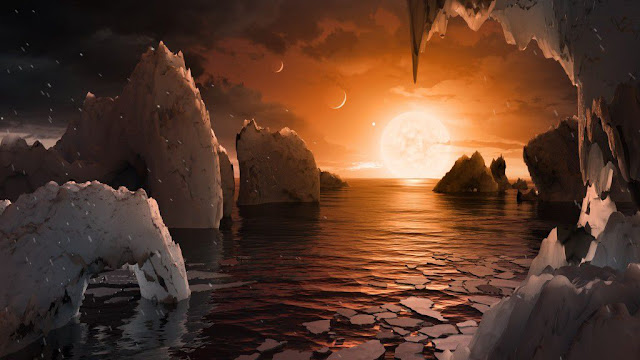 |
| 7 Earth-like planets could be best bet to find alien life |
Astronomers call Trappist-1 the most incredible star system they've ever seen. A newly discovered set of exoplanets only 39 light-years away could be the perfect lab for finally proving we aren't alone.
A nearby, relatively dim little star nobody even noticed until about 20 years ago might be playing host to the most intriguing planetary party yet seen.
On Wednesday, astronomers announced that the star, Trappist-1, is circled by at least seven Earth-sized planets, including three that could have oceans of liquid water to maybe, just maybe, support life.
"Looking for life elsewhere, this system is probably our best bet as of today," said Brice-Olivier Demory, professor at the University of Bern's Center for Space and Habitability and one of the authors of a paper on the discovery published Wednesday in the journal Nature.
The team first put Trappist-1 on the map last year with the announcement it hosted at least three planets, the first exoplanets to be spotted around an ultracool dwarf star, representing a whole new promising avenue in the search for life beyond the grasp of our own sun.
Upon closer inspection and poring through data from telescopes around the world and NASA's Spitzer Space Telescope, the scientists realized what first appeared to be three planets is really at least seven -- and all only 39 light-years away.
"This is really the first time we have seven planets which can be called terrestrial which are in the temperate zone," astronomer Michael Gillon at the University of Liège in Belgium told reporters on a conference call. "So many is really, really surprising."
The seven planets, named Trappist-1b, c, d, e, f, g and h in order of increasing distance from their parent star, orbit much closer than all planets in our solar system, even Mercury. In fact, the astronomers on Gillon's team say the system better resembles the handful of rocky moons orbiting Jupiter. But because Trappist-1 is much smaller and cooler than our sun, it provides its more closely orbiting temperate zone planets with about as much energy as Venus, Earth and Mars get from our star. Read More...








0 comments: